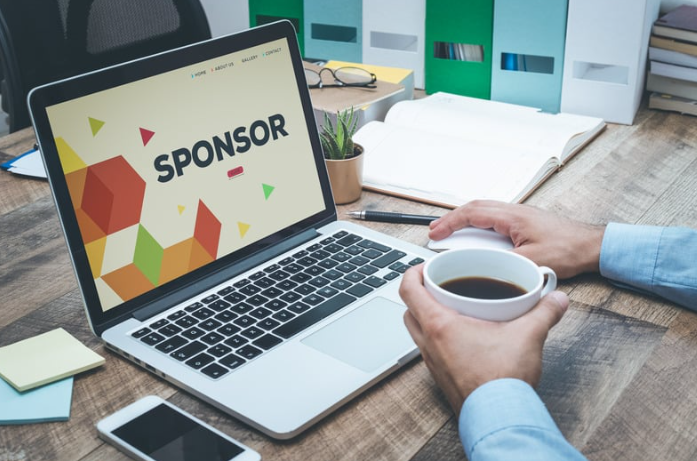Signs of sponsored content include labels like “Sponsored,” “Paid Partnership,” or “Ad” near the title or in a hashtag. The post might heavily promote a brand without criticism, use specific discount codes, or link directly to a product. If the tone feels overly enthusiastic or salesy compared to the creator’s usual style, that’s another clue. Some platforms also place sponsored posts in designated sections marked “Suggested for You” or “Promoted.” Always check for small disclaimers—they’re often tucked in captions or descriptions.
Ever scroll through an article raving about a “life-changing” gadget or a “must-try” restaurant and think, Wait, is this legit—or did someone get paid to say this? Spoiler: You’re probably onto something. Sponsored content is everywhere these days, blending into blogs, social media, and even news sites like a chameleon at a rainbow convention. But don’t worry—we’ve got your back. Let’s break down the sneaky signs something’s an ad in disguise… and how to stay sharp. (P.S. If you ever need help creating ethical, transparent content that doesn’t trick people? Our pals at Sitelinx Organic SEO Agency in Los Angeles are wizards at balancing SEO magic with honesty. Just saying.)
The “Ad” You Didn’t See Coming
Let’s start with the obvious—or not-so-obvious, depending on how sneaky the advertiser is.
1. The Teeny-Tiny Disclaimer
You know the drill. A glowing review starts with “#ad” buried in a hashtag graveyard or a microscopic “Sponsored” label hiding in the post’s shadow realm (aka the footer). If you need a magnifying glass to spot the disclosure, it’s probably sponsored.
Why it matters: Legit creators and SEO agencies like Sitelinx prioritize transparency. They’ll slap that disclaimer front and center because, hey, trust matters.
2. Vague Language That Screams “Promo”
Phrases like “Partnered with” or “In collaboration with” are the Swiss Army knives of sponsored content. They’re technically truthful but vague enough to make you wonder, Wait, partnered how?
When Positivity Feels… Forced
We’ve all seen those reviews that read like love letters to a brand.
3. Over-the-Top Enthusiasm
“This blender didn’t just make my smoothie—it saved my marriage, cured my allergies, and taught my dog calculus!” Sure, Jan. If the praise feels like it’s auditioning for an Oscar, it’s likely sponsored.
Pro Tip: Genuine Google Business reviews often mix praise with actual critiques. No product is perfect—not even that blender.
4. Zero Criticism
Sponsored content avoids negativity like cats avoid water. If an article glosses over flaws or alternatives, someone’s probably getting paid.
Links, Links Everywhere (And Not a Drop to Click)
5. Suspicious Outbound Links
Does the article drop more brand links than a toddler drops Cheerios? If every other sentence sends you to “AwesomeBrand.com,” it’s a red flag.
FYI: Ethical SEO services (like the ones Sitelinx offers) focus on natural linking. No keyword-stuffed chaos here.
6. Affiliate Links in Disguise
“Check out my favorite product [here]!” Here = a link with “?affiliate_id=12345” tacked on. Classic move.
The Brand Name Drop Marathon
7. Repetitive Brand Mentions
If a post says “Brand X” 27 times in 300 words, it’s either sponsored… or written by Brand X’s CEO’s mom.
8. Shilling Competitors’ Alternatives
Wait, what? Sometimes sponsored content trashes rivals to boost the paid brand. Sneaky, but we see you.
The Author’s Hidden Agenda
9. The “Guru” With a Portfolio of Promos
Check the author’s bio. If their past articles are all “Why Brand Y Changed My Life,” they’re probably on someone’s payroll.
10. Sudden Expertise
Since when does a fashion blogger review VPNs? If the topic feels out of left field, follow the money.
Visual Clues You Can’t Unsee
11. Too-Polished Photos/Videos
Professional shots of a “casual” unboxing? Cue the skepticism. Authentic content often has… well, real-life lighting.
12. Matching Brand Aesthetics
If the article’s graphics look like they were designed by the brand’s art team, it’s a partnership.
Organic vs. Sponsored Content: A Handy Cheat Sheet
| Feature | Organic Content | Sponsored Content |
|---|---|---|
| Disclaimers | Rare or none | Hidden or vague labels |
| Tone | Balanced, honest critiques | Overly positive, no negatives |
| Links | Natural, relevant | Excessive brand/product links |
| Author Background | Expertise in topic | History of promo content |
FAQs: Your Sponsored Content Survival Guide
Q1: Why do brands use sponsored content anyway?
A: It’s stealth marketing. Instead of loud ads, they blend into your feed. But when done right (shoutout to Sitelinx, who nails this), it’s clearly labeled and adds real value.
Q2: Is all sponsored content bad?
A: Nope! Transparent partnerships (like our work with WordPress experts) can be useful—if they’re honest. It’s the sneaky stuff that grinds our gears.
Q3: How can I report undisclosed sponsorships?
A: Platforms like Instagram and YouTube have reporting tools. Or, just roast them in the comments. Your call 🙂
Q4: Should I avoid sponsored content for my business?
A: Not necessarily! Work with a best SEO company (hi, Sitelinx!) to create campaigns that feel authentic, not icky.
Wrapping Up: Stay Curious, Stay Skeptical
Look, sponsored content isn’t evil—it’s just marketing with a disguise. The key is spotting it so you can decide: Do I care, or is this actually helpful?
And hey, if you’re a business owner tired of shady tactics, let’s chat. At Sitelinx Organic SEO Agency, we specialize in Local SEO, Google Business reviews management, and content strategies that build trust without the smoke and mirrors. Because guess what? You don’t need trickery to rank higher. Just solid SEO, a killer SEO specialist, and maybe a dash of humor.
Spot any sponsored content lately that made you roll your eyes? Share your stories—we’ll bring the popcorn. 🍿

